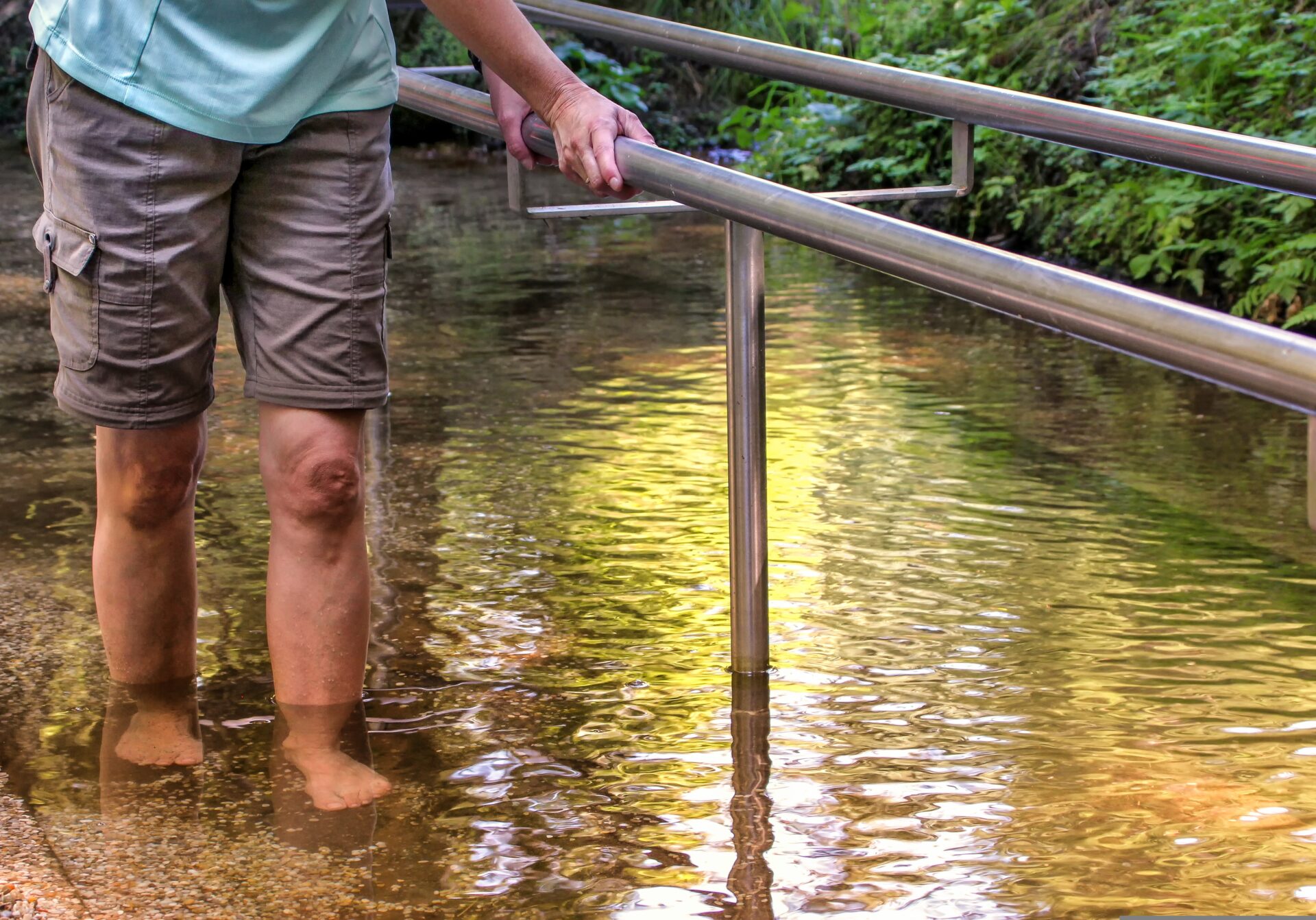The Kneipp path in EPS, easy and lightweight to make
EPS Kneipp path
Integrating the Kneipp path with the use of EPS (Expanded Polystyrene) represents an innovative combination of wellness and technology, creating a unique and comfortable experience for those seeking relaxation and physical rebalance.
The lightweight and insulating material of EPS provides the ideal base for creating the stations of the Kneipp path. The ergonomic and comfortable surfaces of the steps and structures of the path are designed to adapt to the body’s natural curves, ensuring pleasant and comfortable contact during the journey.
Aesthetic advantages of EPS for Kneipp paths
The versatility of EPS allows for the creation of customised and decorative elements that aesthetically enrich the path. Through the molding of Expanded Polystyrene, details such as artificial rocks, anatomical seats and nature-inspired decorative elements can be created, enhancing the sensory experience of the path.
Additionally, EPS, thanks to its weather resistance, allows for the creation of a long-lasting Kneipp path with minimal impact from wear and tear. Its lightweight nature simplifies the handling and installation of the various path stations, allowing for efficient and rapid construction.
The use of EPS in Kneipp paths not only contributes to the comfort and durability of the structures but also adds an element of sustainability due to the recyclable nature of the material. In this way, participants can enjoy a wellness experience immersed in nature, with the awareness of an eco-friendly approach to design and construction.
Advantages of using EPS for building Kneipp paths
- Lightweight: EPS is known for its lightweight nature, making it easy to handle and install. This characteristic simplifies the construction process of Kneipp paths, allowing for greater flexibility in design and reducing installation times.
- Thermal insulation: EPS is an insulating material, which can help maintain a comfortable temperature during the use of the Kneipp path. This is particularly beneficial when the path includes stations with water at different temperatures, improving the overall comfort of the experience.
- Versatility in planning: EPS can be easily molded to create customised shapes and architectural details. This versatility allows for the design of unique and aesthetically pleasing Kneipp paths, with sculpted elements that mimic nature or add decorative elements to the overall structure.
- Durability: EPS is resistant to weathering, decomposition and attacks by bacteria and fungi. This resistance contributes to the durability of Kneipp path structures over time, reducing the need for frequent maintenance.
- Ease of integration with natural elements: EPS can be easily combined with natural materials such as stones, wood or plants, enhancing the integration of the Kneipp path into the surrounding environment. This synergy can enhance the relaxing and natural effect of the experience.
- Sustainability: EPS is a recyclable material, contributing to environmental sustainability efforts. By using EPS in Kneipp paths, an eco-friendly approach to building wellness structures can be adopted.
- Cost-effectiveness: EPS is often more economical than other construction materials, allowing for cost-effective construction of Kneipp paths.


